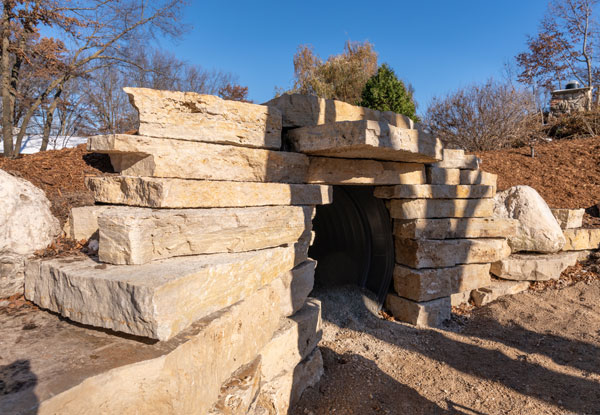Wisconsin’s landscape looks drastically different throughout the state. As you wander towards Lake Michigan, you may find some steep stone drops and cliffs, a stark contrast to the rolling hills of central Wisconsin. Well, you may have just stumbled upon an ancient geological formation, the Niagara Escarpment.
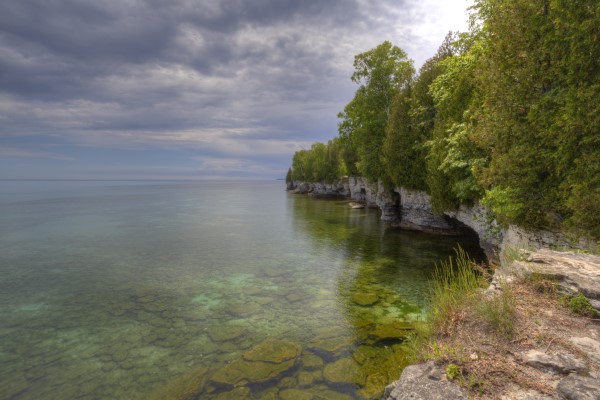
What is the Niagara Escarpment?
The Niagara Escarpment is a rocky 650 miles of land arcing more than 1,000 miles from eastern Wisconsin, up into Ontario, and all the way to the state of New York.3 Being as lucky as we are, Wisconsin contains more than 230 miles of the Escarpment stretching from the tip of the Door Peninsula down to northern Milwaukee.1
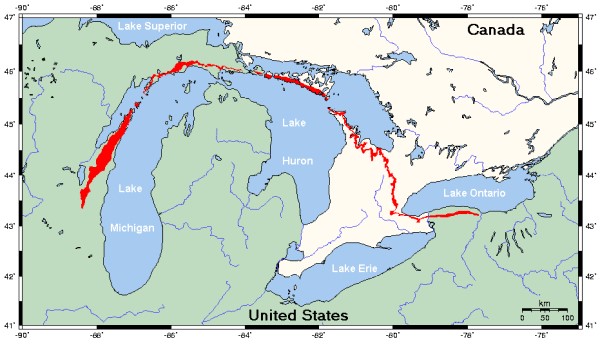
The Niagara Escarpment has quite a prehistoric past. The bedrock formed from sediments of an ancient sea that covered the area during the Silurian Period of the Paleozoic Era. For those of us who are a little rusty on our geologic eras, that’s roughly 405-425 million years ago.1 Evidence of this ancient sea still exists in fossils and reef formation remains.3 The Niagara Escarpment is made of a lot of stone that’s particularly vulnerable to water erosion, so glaciers also smoothed the cliff faces and left glacial deposits. Water-formed features of the escarpment include rock ledges, caves, sinkholes, and crevices.1 In fact, the Escarpment is home to the most underground cave systems anywhere in the state of Wisconsin!3
Plants That Grow Along the Escarpment
Because the Escarpment spans multiple climates in Wisconsin, the flora varies greatly depending on the location. The northern regions are surrounded mostly by hardwood and conifer forests,1 which include cedar trees that are over 1,000 years old.3 In southern Wisconsin, the Escarpment used to be surrounded by prairies, oak savannas, and hardwood forests. However, there are currently no significant remnants of prairies or oak savannas near the Escarpment.1
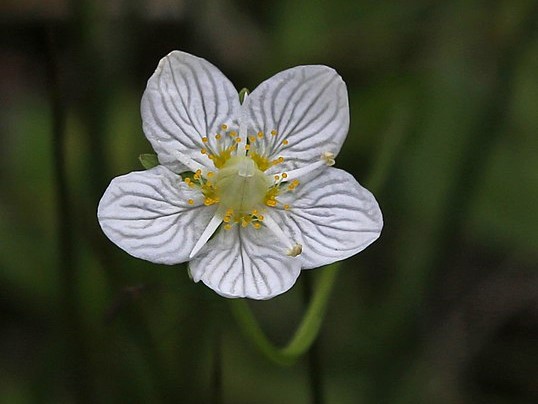
Because of how unique the Escarpment is, it’s home to many incredibly rare species. Some don’t exist anywhere else in the world! A few of the unique plant species in the Niagara Escarpment, like rock whitlow-mustard, actually depend on bedrock exposure to be able to survive. Because of their specific habitat needs, they’re rarely found elsewhere.1
Animals That Live Along the Escarpment
The Niagara Escarpment also serves as critical habitat for many animal species. It might sound kind of odd, but the Escarpment houses many rare land snails, some of which date back to the last Ice Age. Previously wide spread, they’re now restricted to microhabitats in the Midwest because of the ways that the climate has changed since the Pleistocene. Seven of these land snail species are globally imperiled, so it’s important that we preserve their habitat.1
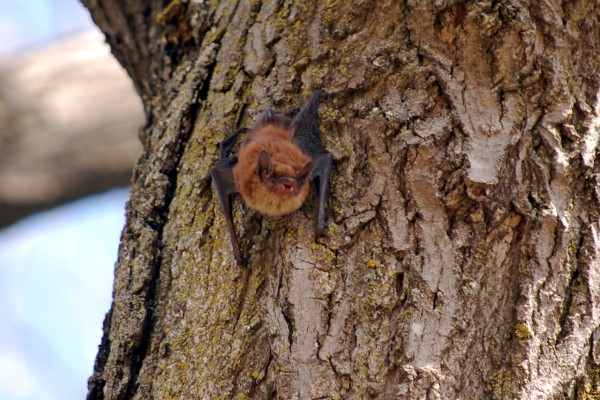
Much of the escarpment is also bat hibernacula! The many caves, sinkholes, and mine shafts are the perfect summer home or cozy winter spot for our bat friends. I don’t want to spoil too much though, so you can keep an eye out for a future blog on the many bats of the Niagara Escarpment!1
Support the Niagara Escarpment’s Biodiversity
So, how have people interacted with the Niagara Escarpment? Native American people used to inhabit the Escarpment and considered it to be sacred. They took care of the Escarpment for countless generations and lived without damaging it. Many locations even contain cultural assets like petroglyphs, pictographs, and effigy mounds.3 Unfortunately, colonization came with the exploitation of the Escarpment. Many sites were mined for limestone and became quarries that irreparably altered the landscape.2
Today, it’s immensely important that we protect the Niagara Escarpment. With the growth of regions of Wisconsin, especially the Door Peninsula, the Escarpment is threatened by development. As northbound traffic increases, road construction to expand highways puts areas of the Escarpment in danger. Many land plans also don’t recognize the Escarpment as the hub of biodiversity that it is. By increasing awareness and advocating within our communities, we can preserve the Niagara Escarpment for generations to come.1
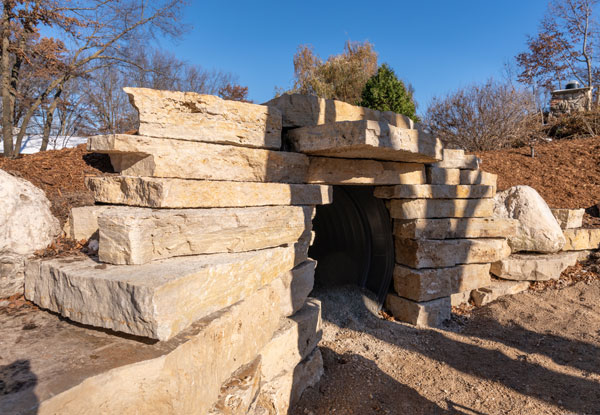
That’s all for today, but the learning doesn’t have to stop! Check out the new Schanock Family Hillside Tunnel & Cave Play area in the Carol & Bruce Bell Children’s Garden to better understand the geological story of the Niagara Escarpment and its importance in our community.
Sources
- Anderson, Craig, et al. “The Niagara Escarpment: Inventory Findings 1999-2001 and Considerations for Management, Final Report.” Wisconsin Department of Natural Resources, 1 May 2002, dnr.wi.gov/files/PDF/pubs/er/ER0806.pdf.
- “History | High Cliff State Park.” Wisconsin DNR, dnr.wisconsin.gov/topic/parks/highcliff/history#:~:text=Between%201%2C000%20and%201%2C500%20years,breathtaking%20views%20of%20Lake%20Winnebago. Accessed 17 July 2023.
- “Learning.” Wisconsin Ledge, www.wiledge.org/learning. Accessed 17 July 2023.


